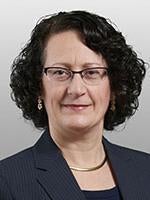Our previous post described the recent growth in section 337 patent disputes at the ITC involving medical devices. This post explains the key issues involved in a section 337 case and how they get decided.
To prove a violation of section 337, a complainant must show three things: (1) that articles are being imported into the United States; (2) that those articles infringe complainant’s patent(s); and (3) that the complaining company or its licensee has made sufficient economic investments in exploiting its patent in the United States to satisfy section 337’s definition of a “domestic industry.”
In the case of medical devices, importation is generally not difficult to prove. There is no minimum dollar value of imports, and even a few units imported for testing or for demonstration at a trade show can suffice. In section 337 litigation overall, the most common nationalities of respondent companies and/or their accused products are China and Korea. For medical device products, in contrast, the vast majority of respondents are located and produce their accused products in Europe, Japan, Canada, and Israel. Since 1996, only three investigations have involved medical device products made in China: birthing simulators, adjustable height beds, and CPAP machines.
The legal standards for proving patent infringement at the ITC are virtually identical to those applied by judges in federal district court, and almost all the defenses a company accused of patent infringement can raise in district court can also be raised by a respondent at the ITC. What is different is the process. Discovery at the ITC moves very quickly, and cases go to trial in less than a year. Instead of a judge and jury, patent cases at the ITC are heard by an ITC administrative law judge who is an expert in section 337 proceedings and then reviewed by the six Commissioners. The procedural rules are different than those in district court, meaning even experienced patent trial counsel need help from an ITC litigation expert in trying a case under section 337.
Perhaps the most unique aspect of a section 337 case is the domestic industry requirement. While a medical device company does not have to show that its product is 100 percent U.S. manufactured, it does have to show a significant U.S. investment in production, R&D and engineering, or licensing of a product that practices the patented invention. Mere ownership of a U.S. patent is not enough.
While a lively debate continues over whether the ITC is a favorable forum for non-practicing entities (companies that own patents but do not use them to produce products), publicly available information suggests that non-practicing entities represent a much smaller share of complainants in investigations involving medical devices than in section 337 investigations generally. The ITC estimates that about 20 percent of complaints since 2006 have been filed by NPEs, of which about half were filed by patent assertion entities (sometimes called “patent trolls”). Among 20 medical device cases instituted since 1996, only one appears to involve a non-practicing entity. In all the other cases, the complainant manufactured its product wholly or in part in the United States, by itself or through contractors, or relied upon domestic warranty and repair or other production-related activities recognized by the ITC. This means early evaluation procedures developed by the ITC to quickly dismiss complaints based on non-meritorious domestic industry claims may be of limited use to medical device companies responding to section 337 complaints, if these trends continue.
After trial, the ALJ makes an initial determination of whether there is a violation of section 337 and, after review, the Commissioners make a final determination. Our next post in this series will look at the ITC’s treatment of remedy issues and an overall assessment of how medical device cases at the ITC have turned out.



 />i
/>i

